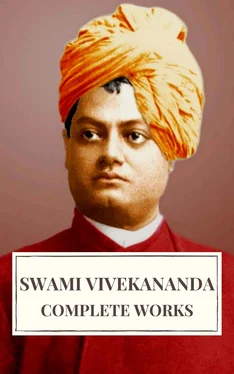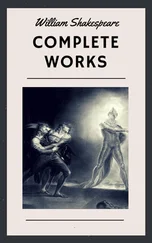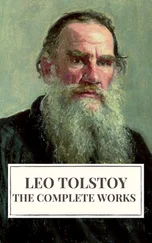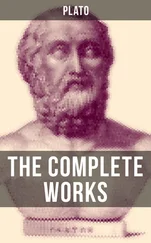
39. Or by the meditation on anything that appeals to one as good.
This does not mean any wicked subject, but anything good that you like, any place that you like best, any scenery that you like best, any idea that you like best, anything that will concentrate the mind.

40. The Yogi’s mind thus meditating, becomes unobstructed from the atomic to the infinite.
The mind, by this practice, easily contemplates the most minute, as well as the biggest thing. Thus the mindwaves become fainter.

41. The Yogi whose Vrittis have thus become powerless (controlled) obtains in the receiver, (the instrument of) receiving, and the received (the Self, the mind, and external objects), concentratedness arid sameness like the crystal (before different coloured objects).
What results from this constant meditation? We must remember how in a previous aphorism Patanjali went into the various states of meditation, how the first would be the gross, the second the fine, and from them the advance was to still finer objects. The result of these meditations is that we can meditate as easily on the fine as on the gross objects. Here the Yogi sees the three things, the receiver, the received, and the receiving instrument, corresponding to the Soul, external objects, and the mind. There are three objects of meditation given us. First, the gross things, as bodies, or material objects; second, fine things, as the mind, the Chitta; and third, the Purusha qualified, not the Purusha itself, but the Egoism. By practice, the Yogi gets established in all these meditations. Whenever he meditates he can keep out all other thoughts; he becomes identified with that on which he meditates. When he meditates, he is like a piece of crystal. Before flowers the crystal becomes almost identified with the flowers. If the flower is red, the crystal looks red, or if the flower is blue, the crystal looks blue.

42. Sound, meaning, and resulting knowledge, being mixed up, is (called) Samadhi with question.
Sound here means vibration, meaning the nerve currents which conduct it; and knowledge, reaction. All the various meditations we have had so far, Patanjali calls Savitarka (meditation with question). Later on he gives us higher and higher Dhyânas. In these that are called “with question,” we keep the duality of subject and object, which results from the mixture of word, meaning, and knowledge. There is first the external vibration, the word. This, carried inward by the sense currents, is the meaning. After that there comes a reactionary wave in the Chitta, which is knowledge, but the mixture of these three makes up what we call knowledge. In all the meditations up to this we get this mixture as objects of meditation. The next Samadhi is higher.

43. The Samadhi called “without question” (comes) when the memory is purified, or devoid of qualities, expressing only the meaning (of the meditated object).
It is by the practice of meditation of these three that we come to the state where these three do not mix. We can get rid of them. We will first try to understand what these three are. Here is the Chitta; you will always remember the simile of the mind-stuff to a lake, and the vibration, the word, the sound, like a pulsation coming over it. You have that calm lake in you, and I pronounce a word, “Cow”. As soon as it enters through your ears there is a wave produced in your Chitta along with it. So that wave represents the idea of the cow, the form or the meaning as we call it. The apparent cow that you know is really the wave in the mind-stuff that comes as a reaction to the internal and external sound vibrations. With the sound, the wave dies away; it can never exist without a word. You may ask how it is, when we only think of the cow, and do not hear a sound. You make that sound yourself. You are saying “cow” faintly in your mind, and with that comes a wave. There cannot be any wave without this impulse of sound; and when it is not from outside, it is from inside, and when the sound dies, the wave dies. What remains? The result of the reaction, and that is knowledge. These three are so closely combined in our mind that we cannot separate them. When the sound comes, the senses vibrate, and the wave rises in reaction; they follow so closely upon one another that there is no discerning one from the other. When this meditation has been practiced for a long time, memory, the receptacle of all impressions, becomes purified, and we are able clearly to distinguish them from one another. This is called Nirvitarka, concentration without question.

44. By this process (the concentrations) with discrimination and without discrimination, whose objects are finer, are (also) explained.
A process similar to the preceding is applied again; only, the objects to be taken up in the former meditations are gross; in this they are fine.

45. The finer objects end with the Pradhâna.
The gross objects are only the elements and everything manufactured out of them. The fine objects begin with the Tanmatras or fine particles. The organs, the mind, (The mind, or common sensorium, the aggregate of all the senses), egoism, the mind-stuff (the cause of all manifestation), the equilibrium state of Sattva, Rajas, and Tamas materials — called Pradhâna (chief), Prakriti (nature), or Avyakta (unmanifest) — are all included within the category of fine objects, the Purusha (the Soul) alone being excepted.

46. These concentrations are with seed.
These do not destroy the seeds of past actions, and thus cannot give liberation, but what they bring to the Yogi is stated in the following aphorism.

47. The concentration “without discrimination” being purified, the Chitta becomes firmly fixed.

48. The knowledge in that is called “filled with Truth”.
The next aphorism will explain this.

49. The knowledge that is gained from testimony and inference is about common objects. That from the Samadhi just mentioned is of a much higher order, being able to penetrate where inference and testimony cannot go.
Читать дальше























